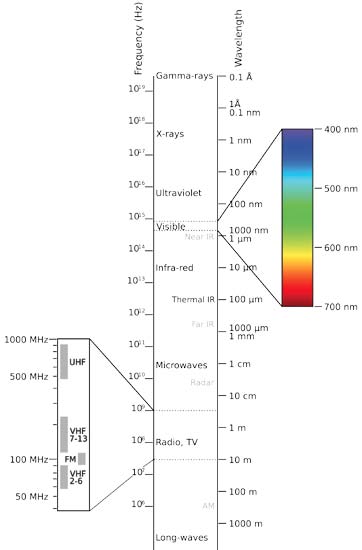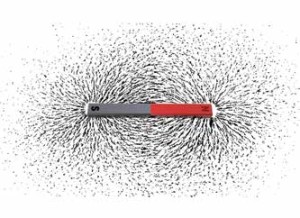We are surrounded by SCIENCE
by Joseph Donahue
Science is applied around us in massive quantities everyday by humans and Mother Nature to an extent far greater than is generally appreciated. The extent of our involvement with science is shown by a few examples cited below.
WHAT IS TEMPERATURE?
Temperature is the measurement of the rate of vibration of atoms. The faster that atoms are vibrating in a material the higher is the temperature of that material. If a material is cooled the vibration slows until at absolute zero the vibrations cease. Thus, there is a lowest possible temperature, absolute zero, which is – 273.15o Celsius or – 459.67o Fahrenheit.
There is no upper limit on temperature. As the temperature increases most materials proceed from a solid to a liquid and to a gas. At higher temperatures molecules separate into atoms which then lose electrons and at very high temperatures become bare atomic nuclei. Such high temperature gasses are called ion plasmas. Plasmas with a temperature of 1,000,000,0000 C. have been created on earth.
 WHAT IS LIGHT?
WHAT IS LIGHT?
Visible light is a small part of electromagnetic spectrum which ranges from radio waves to gamma rays as is shown in the chart.
Electromagnetic radiation waves are fluctuations of electric and magnetic fields, which can transport energy from one location to another.
To include all of the wavelengths of electromagnetic radiation the above chart should be extended down another two inches. Note that the wavelength of the waves range from extremely small, about a billionth of an inch for gamma rays, to over a thousand miles for long radio waves. All of these rays travel at the speed of light, 185,282 miles per hour.
Electromagnetic radiation has no mass. That is the reason that emissions at the speed of light can be readily made. There is no
inertia to overcome.
Our eyes can detect only visible waves which are an extremely small portion of the total electromagnetic spectrum. Eyes evolved to detect the primary radiation from the sun and not all of the other waves which are less common in nature. These other waves are detected by instruments.
There are many uses of the different electromagnetic spectrum rays. Examples include tumor destruction by gamma rays, photographs by x-rays, sterilization by ultraviolet rays, sight by visible waves, cooking by microwaves, many forms of
communication by radio waves and communication with submerged submarines by long radio waves.
 WHAT IS A MAGNET?
WHAT IS A MAGNET?
A magnet is a material that produces a magnetic field. When a material is magnetized the spin of the atomic electrons are aligned in a uniform direction. Iron, nickel and cobalt can be readily magnetized as can many compounds called ferrites.
Magnets are used to hold refrigerator doors tightly closed, in compasses, in speakers and in microphones plus many other uses. Ferrite magnets are used on credit cards, audio and video tapes and hard drives. The magnetic fields surrounding a magnet are shown with iron filings.
Magnetic fields are also produced when electrical current is passed through a coil of wire. The field ceases to exist when the current is stopped. Two major uses of electromagnets are electrical generators and motors.
WHAT IS ATMOSPHERIC PRESSURE?
The weight of a column of air one square inch from sea level to outer space is 15 pounds. Thus the air pressure at sea level is 15 pounds per square inch, psi. At higher altitudes the pressure decreases as the weight of the air above that point decreases.
WHAT IS STATIC ELECTRICITY?
Static charges are produced on objects when electrons are removed thus making one object positively charged and another negatively charged. This normally occurs with friction such as rubbing a balloon which will then stick to a wall because of its charge. On a cold winter day a static charge of thousands of volts can be produced on your body by walking on a carpet.
The accumulation of static electrons is discharged through a spark when a finger approaches a metal conductor.
Voltage does not harm cells, it is current when too high that causes the damage. Using a Van de Graaf static generator volts of 100,000s can safely be placed on a human body or on other objects. Note effects of high static charges on humans.
HOW DOES A MICROWAVE OVEN WORK?
Molecules that contain a dipole, that is one side of the molecule has a plus charge and the other negative, absorb microwave radiation which causes them to vibrate and bounce around. That movement heats the material and thus cooks the food. Microwave absorbing molecules include water, sugars and fats. Non polar materials like glass, paper and plastic are not heated
by microwaves.
HOW DOES REFRIGERATION WORK?
When a gas is compressed it gives off heat as the molecules are forced closer together. In a refrigerator or air conditioner a motor compresses a gas, which heats it up. The heated gas is then passed through a radiator where it gives up the heat to the room or outside air. The compressed gas at a temperature close to the room or outside air is than forced through a small opening into a tube where it expands. As the gas expands it cools as the molecules move away from each other. In a refrigerator the tube wherein the gas expands and cools is inside the refrigerator. The radiator is on the outside of the refrigerator.
HOW MANY STARS ARE THERE IN OUR UNIVERSE?
Thanks to the Hubble telescope in space that question can be largely answered. Our galaxy contains over 100 billion stars. The universe contains about 100 billion galaxies. That brings the total to over 1022 or 10,000,000,000,000,000,000,000 stars.
Our sun is one of those stars. The number of stars in the universe is greater than all of the grains of sand on all of the beaches on earth. Recent observations suggest that the planets in the universe outnumber the stars. And the number of moons probably exceeds the number of planets. The universe also contains many massive gas clouds. It is in these clouds that new stars are born.
WHAT IS THE ORIGIN OF THE ELEMENTS THAT CONSTITUTE EARTH AND MANY OTHER OBJECTS?
The universe started with the big bang. Following some cooling the elements of the universe consisted almost completely of hydrogen and helium, the smallest elements. Today, after almost 14 billion years the universe is still similar with 73 percent hydrogen and 25 percent helium.
The big change in that time is that heavier elements have been created which now constitute about 2 percent of the elements in the universe. It is these heavier elements that make up most of earth and many other planets and moons.
When the hydrogen in a star begins to deplete the star expands up to 1,000 times its former size and becomes a red giant. Without an adequate hydrogen supply the helium atoms begin to unite forming heavier elements. It then progresses to become a large supernova. The stars life ends with a huge explosion where all of elements at blown great distances into space. Our earth is really the ashes of a long dead stars.
DO PITCHED BASEBALLS REALLY CURVE?
Yes, baseballs really curve up to as much as 14 inches from the path that they left the pitchers hand.
If the pitched ball has a counter clock wise spin the balls left surface will have air passing it at the speed of the ball plus the linear movement of the surface of the spinning ball. The right side will have air movement of the speed of the ball minus the spin surface velocity. The faster moving air on the left side will exert a lower pressure on the ball than that on the right. This difference in pressure causes the ball to curve left.
The same principle works on golf balls wherein slices and hooks are caused by clockwise or counterclockwise spins on the ball. Because of its long flight a badly sliced golf ball can curve as much as 450. A ball with no spin will proceed straight without curving.
WHAT IS THUNDER?
When a lightning discharge occurs it heats the air in the discharge to around 50,000o F., hotter than the surface of the sun. This rapid heating and expansion of air creates a shock wave, which is known as thunder.
The distance of the lightning from an observer can be determined by counting the seconds between the light flash and the thunder sound. Light travels very fast, 186,282 miles per second, and thus arrives at the observer almost instantaneously. Sound travels much slower, about 1,100 feet per second in air. Thus each second between the flash and the sound determines the distance to the strike. For example, if the time is five seconds then the strike is about a mile away.
HOW CAN A FIXED TV ANTENNA STAY AIMED AT A FAST MOVING SATELLITE?
This is accomplished by placing the satellite 22,400 miles above the equator. In this position the satellite revolves around the earth at the same speed that the earth rotates. Thus with respect to the earth the satellite is in a fixed position even though it is moving at a high velocity.
WHY DO MOVING BICYCLES STAY UPRIGHT?
It was initially thought that a bicycle remained upright because of the gyroscopic effect of the spinning wheels. That may play a small effect but experimentally constructed bikes with counter wheels, which cancelled out the gyroscopic effect also stayed upright. A bike sent forward on its own without a rider as seen below will correct itself and stay vertical as long as a reasonable velocity is maintained. If a riderless bicycle is sent down a slight incline it will remain vertical and proceed a long distance on its own.
Amazingly, the process is not fully understood but it relates to the fact that the contact point of the front wheel is behind the axis point of the steering column thus the front wheel follows along as does the front caster on a shopping cart. Another demonstration of this stability is that a bike rider can go long distances without touching the handlebars.

Leave a Reply
Want to join the discussion?Feel free to contribute!